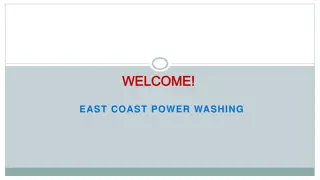Fascinating Adventures of Trolling on the West Coast of Haida Gwaii
Explore the exciting and hazardous world of trolling on the West Coast of Haida Gwaii captured through stunning photographs. From landing valuable chinook salmon to mastering the skills of catching mature springs, witness the skill and thrill of this fishing technique. Learn about the history of sea otter fur trade at Cloak Bay and the unique challenges faced by the crew as they navigate the wild ocean. Join the crew as they dress the catch for preservation, showcasing the daily routine of these skilled fishermen.
Download Presentation

Please find below an Image/Link to download the presentation.
The content on the website is provided AS IS for your information and personal use only. It may not be sold, licensed, or shared on other websites without obtaining consent from the author.If you encounter any issues during the download, it is possible that the publisher has removed the file from their server.
You are allowed to download the files provided on this website for personal or commercial use, subject to the condition that they are used lawfully. All files are the property of their respective owners.
The content on the website is provided AS IS for your information and personal use only. It may not be sold, licensed, or shared on other websites without obtaining consent from the author.
E N D
Presentation Transcript
West coast trolling around Haida Gwaii. Photo credits: Jesse Sewell, Roger Sewell, Gordon McMahon.
Trolling is hazardous and exciting. We fish in all kinds of sea conditions.
Spring, or chinook salmon are very valuable to trollers. They are strictly managed as a quota fishery.
Each fish is caught individually on a barbless hook. If a fish is well hooked and not too large it can be simply lifted into the boat.
It takes lots of practice to acquire the skills needed to land a mature spring with just a hand held line and a gaff.
In the jargon of the industry a spring over 12 pounds dressed weight is called a smilie because the crew can t help but grin at such a beautiful catch.
Springs usually bite best early in the morning and late in the evening.
Cloak Bay was ground zero of the sea otter fur trade in the 19thcentury.
It affords marginal protection from the wild ocean on the west side of Haida Gwaii.
Dressing the catch before it is flash frozen is a big part of the crew s daily work.
Sockeye bound for the Fraser River are often an important part of the troll season.
These prime Adams River sockeye were caught in Johnstone Strait near Alert Bay.
Sockeye are prized by chefs and fish lovers for their rich oil content and deep red flesh.
We see many strange and wonderful sea creatures during a season.
Ocean sunfish, or mola mola, are the largest finned fish on earth, weighing up to 5600 pounds.
They are frequently seen off the B.C. coast in late summer.
Humpback whales are a common sight in northern B.C. waters.
This pod is feeding in Wright Sound, on the proposed Enbridge tanker route.
The presence of whales always signals abundant feed and good fishing.
A big swell and brooding sky announce the end of summer.
More hazards of the industry. The Amber Sunrise has hit an uncharted rock.
We tow them from Cape Chacon, Alaska, to Prince Rupert, a journey of 100 miles.
A huge bull humpback whale escorts us into Prince Rupert.
Back on the fishing grounds the bite is on. This Spring salmon took a green and white hootchie.
Our Gopro captures the underwater fury of a hooked spring salmon.
Spoons are another favoured lure for West Coast trolling.
We seek shelter from worsening weather through a narrow gap in the rocks at Seven Mile.























